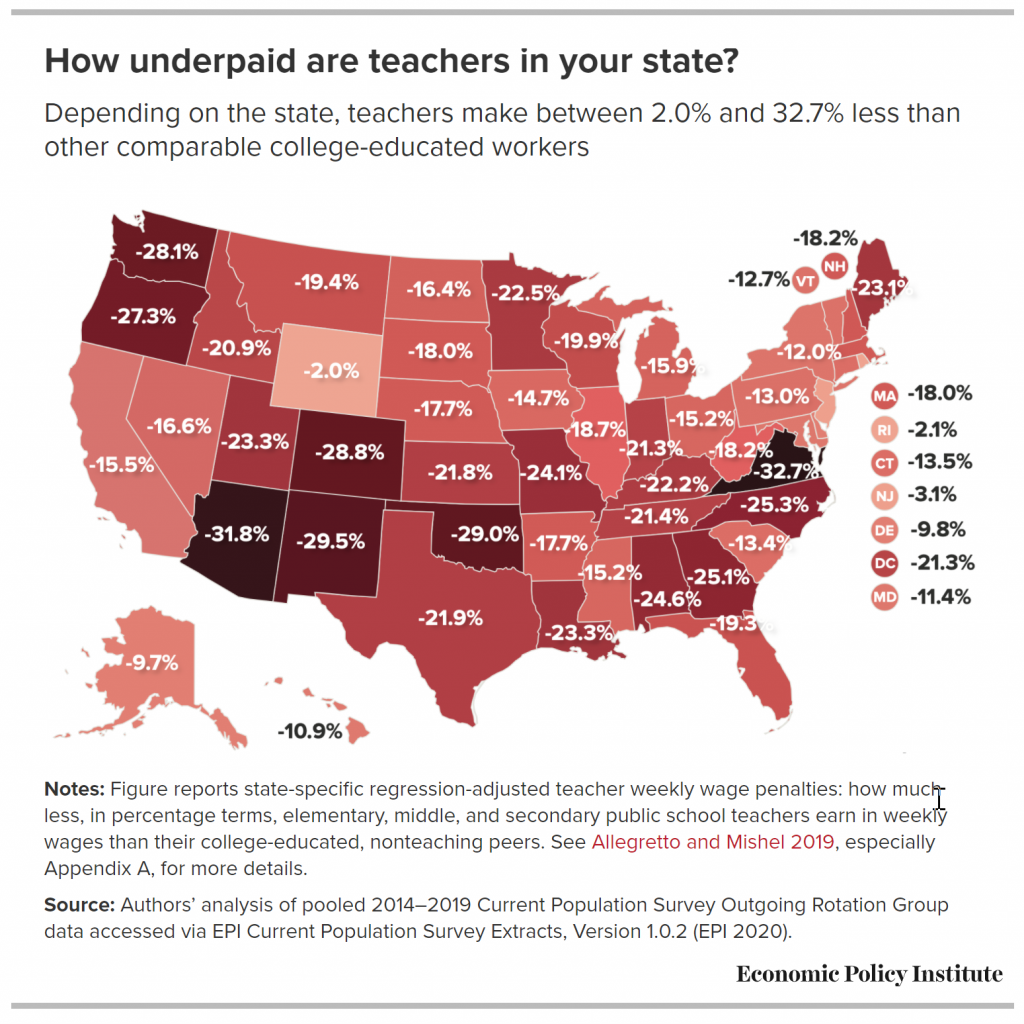
Depending on the state, teachers make between 2.0% and 32.7% less than other comparable college-educated workers
Swift herself directed a short video based on the song, six more versions of the track were showed on the YouTube channel (including lyric video, karaoke version taylor swift instagram and acoustic version, the total number of views as of November, 22 – 72 million), and the opportunity to buy a digital copy of the acoustic version with an alternative cover was available on her site for 48 hours.
Access to a quality education in the United States is an important intergovernmental issue, which involves the local, state as well as federal level: whereas local school district governments are often responsible for the front-line provision of public education, the nation as a whole benefits from a more educated workforce. At the same time, state governments play an important role by establishing education policies in their respective states and providing funding to ensure more equitable access to education. In addition, teacher compensation is often regulated or legislated at the state level.
In this intergovernmental context, there has been a long-trending erosion of teacher wages and compensation relative to other college graduates. Simply put, teachers are paid less (in wages and compensation) than other college-educated workers with similar experience and other characteristics, and this financial penalty discourages college students from entering the teaching profession and makes it difficult for school districts to keep current teachers in the classroom.
Teacher compensation is not just an issue of staffing: Effective teachers are the most important school-based determinant of student educational performance. To promote children’s success in school, schools must retain credentialed teachers and ensure that teaching remains an attractive career option for college-bound students. A previous report on the topic (Allegretto and Mishel 2019) explains in more detail why providing teachers with a decent middle-class living commensurate with other professionals with similar education is not simply a matter of fairness but necessary to enhance student and economic performance.
A recent study by the Economic Policy Institute and the Center on Wage and Employment Dynamics at the University of California, Berkeley, considered the size and variations in the teacher pay gap over time and across states.

Key findings from the study include:
- The teacher wage penalty has grown substantially since the mid-1990s. The teacher wage penalty is how much less, in percentage terms, public school teachers are paid in weekly wages relative to other college-educated workers (after accounting for factors known to affect earnings such as education, experience, and state residence). The regression-adjusted teaching wage penalty was 6.0% in 1996. In 2019, the penalty was 19.2%, reflecting a 2.8 percentage-point improvement compared with a penalty of 22.0% a year earlier.
- The teacher wage penalty declined in the wake of recent teacher strikes but only time and more data will reveal whether teachers’ actions led to a decline and a turning point. The lessening of the teaching penalty from 22.0% in 2018 to 19.2% in 2019 may reflect pay raises enacted in the wake of widespread strikes and other actions by teachers in 2018 and 2019, particularly in some of the states where teacher pay lagged the most. Unfortunately, the data we have to date are not sufficient to allow us to identify the geographic locus of the improvements in teacher wages and benefits and any association with the recent wave of teacher protests and strikes. Only time will tell if this single data point marks a turning point in teacher pay.
- The wage premium that women teachers experienced in the 1960s and 1970s has been replaced by a significant wage penalty. As noted in our previous research, women teachers enjoyed a 14.7% wage premium in 1960, meaning they were paid 14.7% more than comparably educated and experienced women in other occupations. In 2019, women teachers were earning 13.2% less in weekly wages than their nonteaching counterparts were—a 27.9 percentage-point swing over the last six decades.
- The wage penalty for men in teaching is much larger than it is for women in the profession, and it too has worsened considerably. The teacher wage penalty for men was 16.6% in 1979. In 2019, male teachers earned 30.2% less than similar male college graduates who chose a different profession. This explains, to a large degree, why only one in four teachers are men.
- While teacher wage penalties have worsened over time, some of the increase may be attributable to a tradeoff school districts make between pay and benefits. In other words, school districts may not be giving teachers raises but are instead offering stable or slightly better benefits, such that benefits make up a larger share of the overall compensation package for teachers than for other professionals. In 2019, nonwage benefits made up a greater share of total compensation for teachers (29.3%) than for other professionals (21.4%). In 2004, nonwage benefits share of compensation was 20.7% for teachers and 18.7% for other professionals.
- The benefits advantage of teachers has not been enough to offset the growing wage penalty. The teacher total compensation penalty was 10.2% in 2019 (composed of a 19.2% wage penalty offset by a 9.0% benefits advantage). The bottom line is that the teacher total compensation penalty grew by 7.5 percentage points from 1993 to 2019.
- The teacher wage penalty exceeds 20% in 21 states and in the District of Columbia. Teacher weekly wage penalties for each state, computed using pooled 2014–2019 data, range from 2.0% in Wyoming to 32.7% in Virginia. In 21 states and the District of Columbia teachers are paid less than 80 cents on the dollar earned by similar college-educated workers.
The Economic Policy Institute and the Center on Wage and Employment Dynamics at the University of California, Berkeley have been sounding the alarm about the relative erosion of teacher earnings and total compensation for 16 years. Embedded in the worsening teacher wage penalty is the opportunity cost of choosing a career in teaching. As wages and compensation of teachers fall further behind that of other professionals it becomes harder to attract students to and retain teachers in the profession. These inequities must be addressed if we are to ensure that the brightest, most highly skilled professionals are at the head of each and every classroom, and to retain experienced teachers in the mix.
Read more the entire report on the Economic Policy Institute website: Teacher pay penalty dips but persists in 2019, by Sylvia Allegretto and Lawrence Mishel (September 17, 2020).
